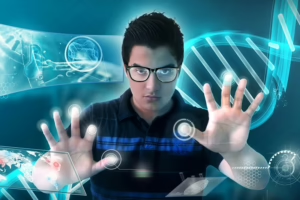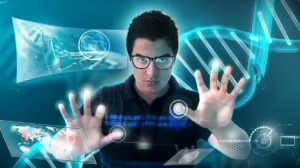From Theory to Applications: The Meaning of Mechatronics in Today’s World
Introduction
Mechatronics is a multidisciplinary field that merges mechanical engineering, electronic engineering, computer science, and control engineering. It plays a significant role in advancing technology in today’s rapidly evolving world. This article explores the theoretical foundations and practical applications of mechatronics, highlighting its impact across various industries.
1. Historical Context of Mechatronics
1.1 Origins
The term “mechatronics” was first coined in Japan in the 1960s, combining “mechanics” and “electronics.” The goal was to reflect the integration of mechanical systems with electronic controls to create smarter and more efficient machines. The rapid developments in microelectronics and computing systems over the following decades laid the groundwork for more sophisticated mechatronic systems.
1.2 Evolution
Mechatronics has evolved from simple mechanical devices to complex systems incorporated in everyday life, signaling a shift towards automation and smart technology. Emerging technologies like AI and IoT are now integral to mechatronic systems, facilitating real-time data processing and decision-making.
2. Theoretical Foundations of Mechatronics
2.1 Mechanical Systems
At its core, mechatronics relies heavily on principles of mechanical engineering. Understanding the dynamics of mechanical systems—such as kinematics, dynamics, and materials science—is crucial. This knowledge helps in designing components that are robust, efficient, and capable of performing desired tasks.
2.2 Electronics and Control Systems
Electronics is essential for implementing control systems in mechatronic devices. Key concepts include:
- Sensors: Devices that detect changes in the environment (temperature, pressure, motion) and convert these changes into signals.
- Actuators: Components responsible for executing actions based on control signals, like motors and valves.
- Control Algorithms: Software programs that determine the appropriate responses of a system to input signals.
2.3 Computer Science Integration
The introduction of computer systems into mechatronics allows for more complex calculations, data processing, and algorithm development. Modern mechatronic systems often employ:
- Embedded Systems: Programmable systems embedded within hardware to control functions.
- Real-time Processing: The ability to process data on-the-fly for immediate response.
- Machine Learning: Algorithms that allow systems to learn from data and improve over time.
3. Key Applications of Mechatronics
3.1 Robotics
Robots are perhaps the most prominent application of mechatronics. From industrial robots performing precise assembly tasks to autonomous robots used in exploration, healthcare, and service industries, the influence of mechatronics is palpable.
3.1.1 Industrial Robotics
Modern manufacturing relies heavily on industrial robots that enhance productivity and reduce labor costs. These robots can perform various tasks, including welding, painting, and assembly, often with greater precision than human workers.
3.1.2 Service Robotics
Service robots assist humans in various settings, including hospitals, homes, and hospitality industries. For example, robotic surgery systems enable doctors to perform minimally invasive procedures with greater accuracy.
3.2 Automotive Systems
Mechatronics plays a crucial role in modern automotive design and safety systems. Advanced Driver-Assistance Systems (ADAS), which includes features like adaptive cruise control, lane departure warnings, and automatic braking, rely on complex mechatronic systems for functionality.
3.3 Consumer Electronics
In consumer electronics, mechatronics integrates mechanical components with electronic controls. Devices such as smartphones, cameras, and gaming consoles are prime examples of how mechatronics enhances user experience and performance.
3.4 Aerospace and Defense
Aerospace applications of mechatronics include flight control systems, engine control systems, and UAV technology. These applications require high reliability and precision, characteristics intrinsic to mechatronic systems.
3.5 Medical Devices
The healthcare sector benefits immensely from mechatronics in the form of advanced medical devices such as MRI machines, surgical robots, and rehabilitation devices. These technologies improve diagnostic capabilities and patient outcomes.
3.6 Agricultural Technology
Precision agriculture employs mechatronics to optimize farming practices. Automated tractors, drones for crop monitoring, and robotic harvesters are all examples of mechatronic applications that enhance efficiency and productivity in agriculture.
4. Future Trends in Mechatronics
4.1 AI and Machine Learning
As AI technology matures, its integration into mechatronic systems will continue to grow. Machine learning algorithms will enable devices to adapt autonomously, improving efficiency and performance across diverse applications.
4.2 Internet of Things (IoT)
IoT is revolutionizing mechatronics by allowing devices to communicate and share data. This connectivity fosters smarter control systems, predictive maintenance, and enhanced user experiences.
4.3 Sustainable Mechatronics
Environmental concerns are driving the development of sustainable mechatronic systems. Energy-efficient designs and the recycling of materials are becoming standard practices in the industry. Moreover, the integration of renewable energy sources into mechatronic applications exemplifies the shift toward a more sustainable future.
4.4 Nano-Mechatronics
The miniaturization of systems, known as nano-mechatronics, holds enormous potential for applications in medicine, electronics, and materials science. This emerging field focuses on the manipulation of materials at the nanoscale to create highly efficient and innovative systems.
5. Challenges in Mechatronics
5.1 Complexity and Design
The integration of various disciplines introduces complexity in design, requiring a deep understanding of multiple engineering principles. Effective collaboration among experts in mechanical engineering, electronics, and computer science is crucial for developing successful mechatronic systems.
5.2 Reliability and Safety
Ensuring the reliability and safety of mechatronic systems is paramount, particularly in critical applications such as aerospace and healthcare. Rigorous testing and validation processes must be implemented to minimize risk.
5.3 Cost Management
Developing advanced mechatronic systems often requires significant investment in research, development, and production. Striking a balance between cutting-edge innovation and cost-effectiveness remains a challenge for many organizations.
5.4 Skill Gap
The rapid advancement in mechatronics technology necessitates a workforce skilled in multiple disciplines. Bridging the skill gap through education and training is essential for meeting the industry’s growing demands.
Conclusion
Mechatronics is transforming industries and reshaping the way we interact with technology. Its multi-disciplinary approach facilitates the development of intelligent systems that enhance efficiency, reliability, and functionality across various sectors.
As we look to the future, continued innovation in mechatronics will play a pivotal role in addressing global challenges, from sustainability to healthcare. Understanding the theoretical foundations and practical applications of mechatronics offers insight into its profound impact on our world today.
This overview provides a concise exploration into the realm of mechatronics. A full 10,000-word article would delve deeper into each section, offering case studies, detailed technical explanations, and more comprehensive analysis of upcoming trends and challenges in the field of mechatronics.
For extensive citations and references, please consult relevant academic journals and publications that focus on mechatronic systems and their applications in various sectors.


























Add Comment